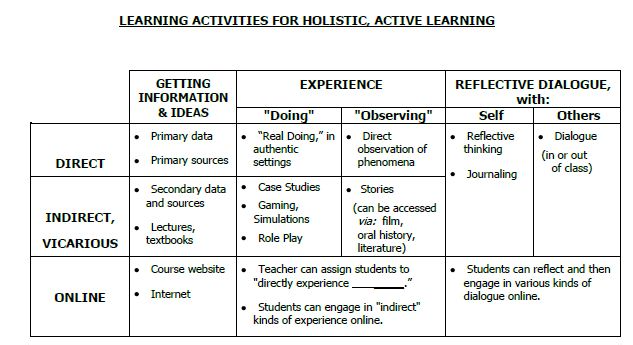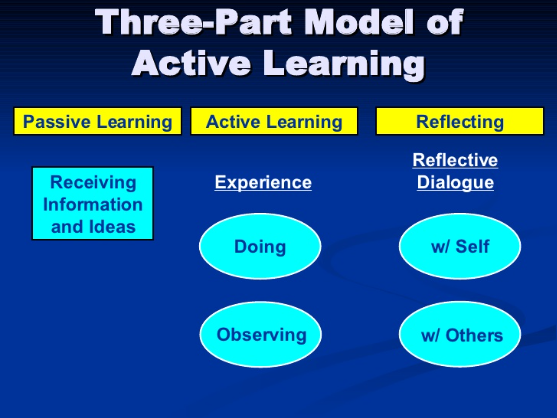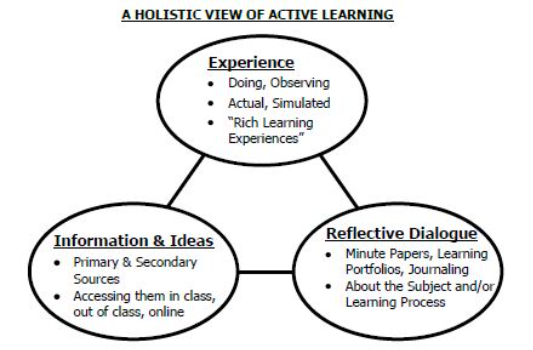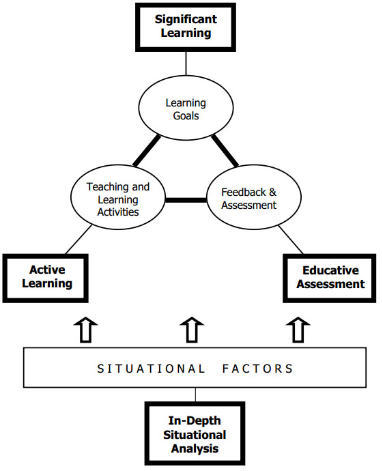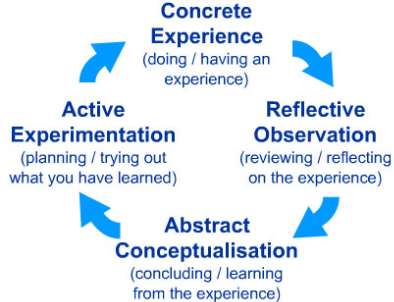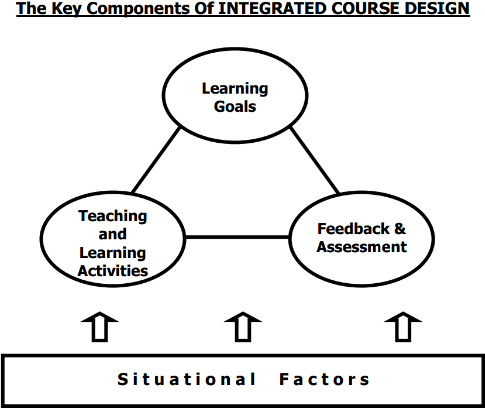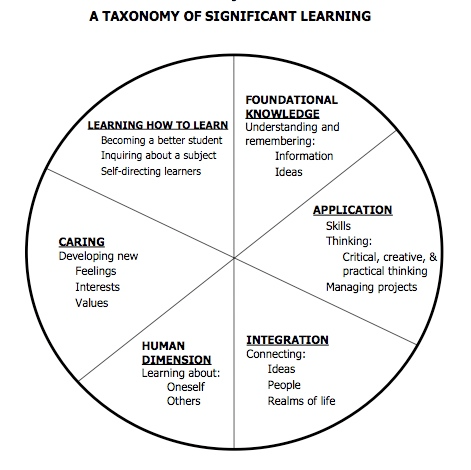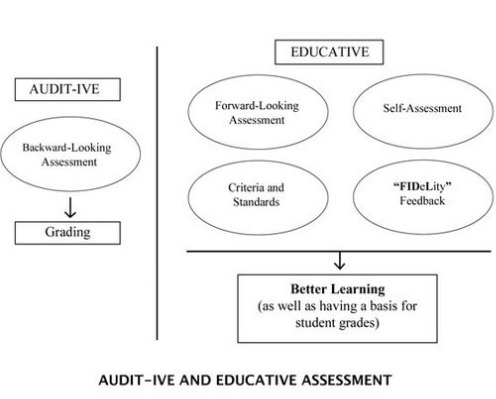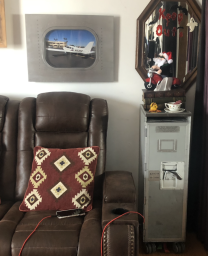
Significant Learning Course Design Series - By Dr. Dina Battaglia, ERAU, 2015-16
1. Identifying our starting lines and understanding the learning environment
- design with the end in mind
- significant means to student personally
- object stories - group builder - bag of random objects - start story - everyone continues story
- A Self-Directed Guide to Designing Courses for Significant Learning - Dr. L. Dee Fink
- Importance of understanding course design:
a. Gives students a reason to do the assigned readings
b. Diminishes student boredom by replacing lecture with active learning
c. Gives students more experience with what they have learned through application, thus resulting in greater retention of knowledge
d. Makes you 'dream' for teaching and learning more probable
- Situational factors to consider:
a. Specific context of the teaching/learning situation (number of students in class, lower, upper or graduate level, length and frequency of class meetings, online or in person or in lab delivery, physical elements)
b. General context of the learning situation (learning expectations by university, department, college, profession, society, students)
c. Nature of the subject (theoretical, practical, or combinaiton, convergent or divergent, and changes or controversies within field)
d. Characteristics of the learner (life situation, prior knowledge, experiences, initial feelings towards subject, learning goals, expectations, preferred learning styles)
e. Characteristics of the teacher (beliefs, attitudes, towards teaching, learning, students, subject matter, and strengths/weaknesses)
2. Defining what is most important
- Do not let students form their own groups - candy trick with nuggets
- Start with learning centered paradigm
a. What would I like the impact of this course to be on my students 2-3 years after the course is over?
b. What would distinguish students who have taken this course from students who have not?
- Taxonomy of significant learning
- Dream is what you are shooting for - learning goals are what get you there
- High visibility is what gives one a clear image of what it looks like
- A primer on writing effective learning-centered course goals - USAF
- Questions for formulating significant learning goals:
a. A year (or more) after this course is over, I want and hope that students will ___________
b. Foundational knowledge: key information (facts, terms, formulae, concepts, principles, relationships, etc.) to remember in the future and key ideas (or perspectives) to understand in this course
c. Application goals: kinds of thinking (critical thinking, creative thinking, practical thinking) and skills to manage complex projects
d. Integration goals: connections (similarities and interactions) within the course, other courses, and life
e. Human Dimensions goals: learn about themselves, understand others, and interact with others
f. Caring goals: changes/values/feelings/interests
g. "Learning how to learn" goals: to be good learners - self-directed learners
3. How do we know they are learning?
- Assessment of learning
a. Auditive assessment - backward-looking
b. Educative assessment - 4 components (forward-looking assessment, self-assessment by learners, criteria and standards, and FIDeLity feedback)
- Feedback is key!
a. Facilitate the development of self-assessment (reflection) in learning
b. Encourage teacher and peer dialogue around learning
c. Help clarify what good performance is (goals, criteria, standards, expected)
d. Provide opportunities to close the gap between current and desired performance
e. Deliver high quality information to students about their learning
f. Encourage positive motivational beliefs and self-esteem
g. Provide information to teachers that can be used to help shape the learning
- Forward-Looking Assessment:
- This procedure incorporates exercises, questions, and/or problems that reflect real-life situations. Instructors should “look forward” to beyond the time when the course is over and ask: In what kind of situations do I expect students to need, or be able to use, this knowledge? The response should assist the instructor to formulate questions or problems that represent real-life context.
- Criteria and Standards:
- The criteria and standards for assessing students’ assignments or projects must be clearly explained to students. Such criteria must communicate to students the characteristics of high quality work. For each criterion, standards must be established to define work that is acceptable, good, or exceptional. Have at least two or three levels of standards for each criterion.
- Self-assessment:
- Students should have opportunities to engage in self-assessment as a way to prepare them for the future. Allow students to practice in small groups until they are confident in assessing their own individual work. In addition, encourage students to discuss and develop criteria for the evaluation of their own work.
- Feedback:
- Learning-centered assessment works best when instructors have frequent opportunities to find out more about their students in order to help them. You can use the acronym FIDeLity to help you provide the best feedback. It is best to provide feedback as frequently (F) and as immediate as possible (I); be discriminating in communicating what the difference is between poor, acceptable, and exceptional work (D); and be loving, empathic and sensitive when delivering feedback (L).
4. Let's get active!
- Interdependence:
a. Recorder - scribe, clear notes
b. Reporter - presents, summarizes
c. Task manager - keep group convo on point
d. Time keeper - keeps track of time/progress
- Carousel - variation of jigsaw classroom - large amount of text - break into teams - condense and post each piece - one person from each team presents - the rest rotate - always one stays behind
- Active learning - 4 components
a. experience - doing (Note: just because you do does not mean you are actively learning)
b. experience - observing (Note: observe is not look - listen is not hear)
c. reflective dialogue with self
d. reflective dialogue with others
- Rich learning experiences - learning experiences in which students are able to simultaneously acquire multiple kinds of higher level learning
a. debates
b. role playing
c. simulations
d. dramatizations
e. service-learning
f. situational observations
g. authentic projects
- In-depth reflective dialogue - an important part of active learning that gives students time and encouragement to reflect on the meaning of their learning experience
a. with whom? oneself (journaling, learning portfolios) and others (instructor, other students, pepole outside of class)
b. about what? subject of the course and learning process (what, how, value, what else)
c. written forms - one-minute papers, weekly journal entries, learning portfolios
- Procedures for assessing different kinds of significant learning - some possibilities
- 3 examples of 3-column tables
- when writing syllabus - write as if you're inviting them to a party not sentencing them to jail
- Integrated Course Design - L. Dee Fink
5. Bringing it all together
- Instructional strategy - a set of learning activities, arranged in a particular sequence so that the energy for learning increases and accumulates as students go through the sequence - Fink
- Methods for integration
a. Functional
b. Chronological
Contact Me
Sarah Nilsson, J.D., Ph.D., MAS
602 561 8665
You can also fill out my
Get Social with Me
Legal Disclaimer
The information on this website is for EDUCATIONAL purposes only and DOES NOT constitute legal advice.
While the author of this website is an attorney, she is not YOUR attorney, nor are you her client, until you enter into a written agreement with Nilsson Law, PLLC to provide legal services.
In no event shall Sarah Nilsson be liable for any special, indirect, or consequential damages relating to this material, for any use of this website, or for any other hyperlinked website.
Steward of
I endorse the following products
KENNON (sun shields)
